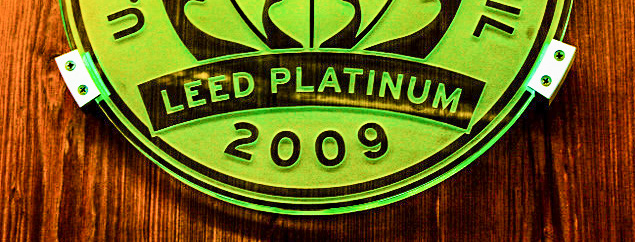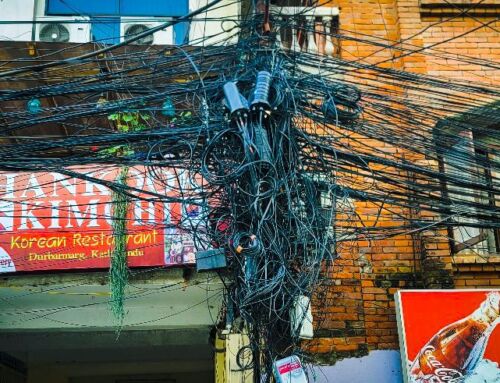View by Topic
Recent Articles
-
EPA Designates PFOA and PFOS as Hazardous Substances under Superfund LawSaturday, April 20th, 2024
-
Federal Government Finalizes New Efficiency Standards for LightbulbsSaturday, April 13th, 2024
-
2024 IECC is Final After Addressing Preemption IssuesSaturday, April 6th, 2024
-
Settlement Portends Broad Failure in Attempts to Ban Natural GasSaturday, March 30th, 2024
-
SEC Climate Disclosure Rule Stay and Venue Now in the 8th CircuitSaturday, March 23rd, 2024
View by Month/Year
“Green Building Law Update” Headlines
Recent Articles & News from
Stuart Kaplow’s blog
at GreenBuildingLawUpdate.com
- EPA Takes Action: PFOA and PFOS Now Hazardous Substances Under Superfund Law April 21, 2024
- Shedding Light on the Future: The Evolution of Lightbulbs in the Wake of New Energy Efficiency Standards April 14, 2024
- 2024 International Energy Conservation Code is Final After Addressing Preemption April 7, 2024
- Settlement Portends Broad Failure in Attempts to Ban Natural Gas March 31, 2024
Subscribe to the Green Building Law Update!
Stuart Kaplow brings his expertise and extensive experience to the table with his unique digital publication, "Green Building Law Update". Subscribers receive regular updates to keep them informed about important issues surrounding Environmental Law, Green Building & Real Estate Law, as well as the emerging demand for Environmental Social Governance (ESG).
Get fresh content through the lense of Stuart Kaplow's cutting-edge expertise, innovative commentary and insider perspective. Don't miss another issue! Subscribe below.

Change to LEED 2009 will have Significant Impact in Maryland, DC and …
The U.S. Green Building Council has just announced that all new projects registering for LEED 2009 beginning on April 8, 2016 will need to satisfy increased minimum energy performance thresholds.
USGBC reported the results of the balloting with 78.6 percent of the consensus body voting in favor of this change to the 7 year old rating system. By the Foundations of LEED rules, a minimum of two thirds approval was needed for any balloted measure.
With this change, projects must now earn a minimum of four points in the Energy Performance credits. The referenced energy standard and modeling requirements in LEED 2009 will not change; buildings falling under the proposed change can use the same methodologies and referenced standards, but will need to earn additional points in order to achieve certification.
This change is significant both in that it will no doubt increase first costs of most LEED projects when those projects will have to satisfy increased minimum energy performance thresholds and in that it is a change to a longstanding approved rating system that is the benchmark in green building laws, construction contracts, and more.
Recall that Rick Fedrizzi, retiring USGBC CEO, announced on October 29, 2014 that users would be able to register projects under the LEED 2009 rating system until October 31, 2016. That extension was occasioned by the delay in LEED v4. Thus, this change will apply to LEED 2009 projects registering between April 8, 2016 and October 31, 2016 (the last day to register a project under LEED 2009).
Today, the Minimum Energy Performance prerequisite, using Option 1, Whole Building Energy Simulation, requires that the applicant,
Demonstrate a 10% improvement in the proposed building performance rating for new buildings, or a 5% improvement in the proposed building performance rating for major renovations to existing buildings, compared with the baseline building performance rating.
The changed credit language is,
For projects that register after 04/07/16 and are subject to the four point mandatory minimum, demonstrate an 18% improvement in the proposed building performance rating for new buildings, or a 14% improvement in the proposed building performance rating for major renovations to existing buildings, compared with the baseline building performance rating.
As indicated above, the referenced energy standard and modeling requirements do not change and still require the applicant to calculate the baseline building performance rating according to the building performance rating method in Appendix G of ANSI/ASHRAE/IESNA Standard 90.1-2007 (with errata but without addenda 25) using a computer simulation model for the whole building project. That is, this is not a move to the newer 2010 version of the ASHRAE 90.1 standard.
You can read the specific changes in the Rating system document.
Note, also new point thresholds are provided for different building types (e.g., health care) to align the effective percent increase in performance. Each of those is best identified in the Summary of changes.
It is difficult to argue against increasing energy efficiency, but this change to LEED 2009 may have a destabilizing effect from changing a rating system midstream, with little advance notice, cutting against the certainty that the real estate industry craves (.. even in this instance when the window will only be for those projects registered with GBCI through October 31, 2016). Given that most building projects are budgeted, programmed, planned and designed over a period of years, to propose a substantive change that will have significant first cost impact, to be effective in a matter of weeks, will reverberate throughout the building industry and, no doubt, expose participants to increased liability for this not programmed change. Additionally, projects attempting to comply with governmental mandates or contractual obligations for LEED certification may create jeopardy.
Of greatest concern are projects attempting to comply with governmental mandates for LEED certification where jeopardy may be created. In Maryland within Baltimore City, Howard County, Montgomery County, the City of Annapolis, as well as in Washington DC, where all construction must be LEED certified or an equivalent, there is concern that this change by USGBC is having the resultant effect of moving the regulatory goalposts. And contracts for public buildings, including schools, throughout Maryland, that could not have anticipated this update to LEED, may leave design professionals and builders alike at risk.
You are urged to consider the impact this may have, and in particular will have on projects not yet registered, with the thought that all projects contemplating pursuing LEED 2009 should now be registered by April 7, 2016, in advance of the effective date of the change.
Everyone involved with LEED projects should promptly review their contracts to determine the implications from this change in LEED and additionally what amendments to contracts may be necessary and proper.









